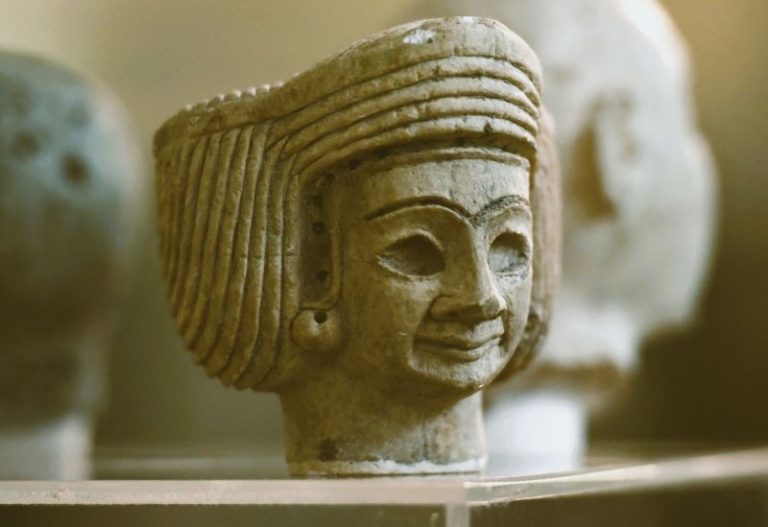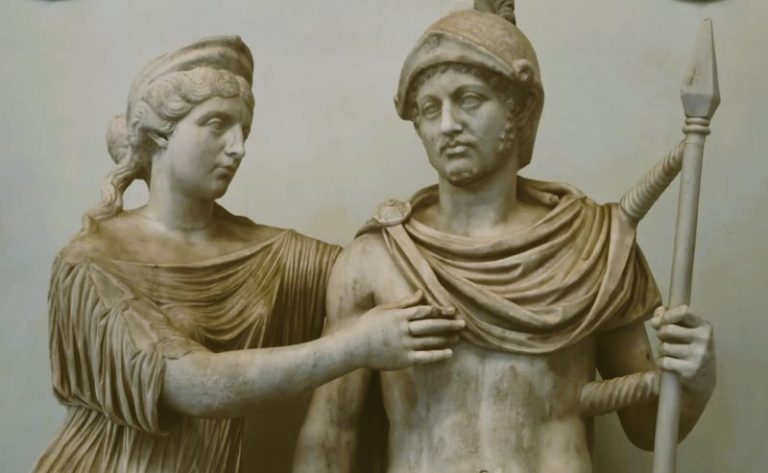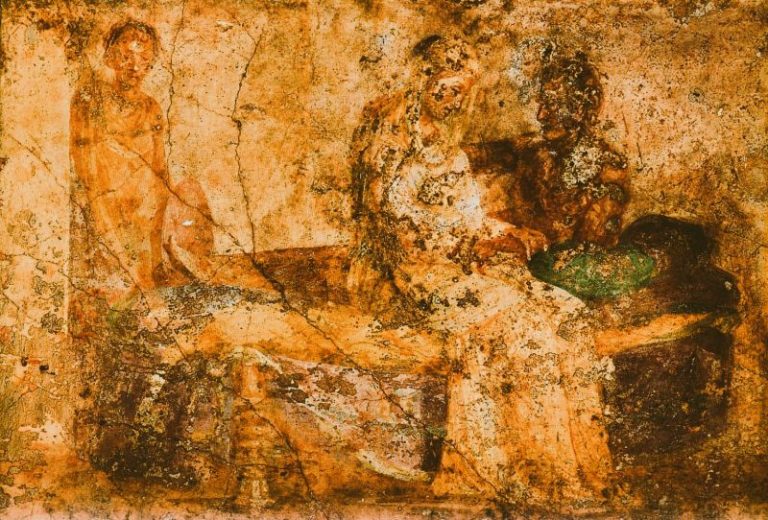

In our own time, where control of information remains a central axis of power, the lessons of scriptoria and stakes are urgent.

By Matthew A. McIntosh
Public Historian
Brewminate
Introduction: The Ink That Threatened Heaven
In an age when parchment bore the weight of eternity and a word could damn as surely as it could save, the written text became both battleground and weapon. The Middle Ages witnessed not only the flowering of monastic scholarship but also the tightening grip of orthodoxy, as ecclesiastical and secular powers confronted the specter of heresy with ink-stained fingers. Control of the written word emerged as a critical instrument in the Church’s long campaign to define, defend, and discipline truth. Through book banning, inquisitorial interrogation, and laws that yoked literacy to loyalty, the medieval Church transformed language into a mechanism of both salvation and suppression.
What follows is not a tale of intellectual apathy but of a conscious and coordinated effort to restrict theological imagination. The rise of vernacular texts, the persistence of dissident voices like the Cathars and the Lollards, and the ecclesial panic sparked by textual reproduction all form a crucible in which medieval censorship was forged. These events did not merely police ideas; they criminalized alternative modes of thinking. The struggle over words, waged from cloistered scriptoria to smoky courtrooms, still echoes in contemporary debates over banned books and “dangerous” speech.
Heresy in Ink: The Church and the Specter of Vernacular Knowledge
Language as Access and Threat

Latin, for centuries the lingua franca of salvation, was the sacred veil behind which theological knowledge nestled. To possess Latin was, in effect, to possess access to divine truth. It was not merely a language but a liturgical partition, ensuring that the uninitiated remained outside the bounds of doctrinal discourse. The slow but steady shift toward vernacular writing, particularly religious writing, threatened to rend that veil. It democratized interpretation, decentered clerical authority, and disrupted the hierarchy of knowledge.
The Church’s response was rarely subtle. The Fourth Lateran Council of 1215 explicitly prohibited the unauthorized translation of sacred texts, a move intended to quell interpretive liberty among lay readers.1 To render the Gospels into the tongue of the marketplace was to risk the collapse of interpretive control. Language, once the architecture of orthodoxy, was now porous, and into that porousness heresy seeped.
The Cathars and the Literacy of Dissent
Among the most enduring threats to ecclesiastical hegemony were the Cathars of southern France. Their theology, gnostic and dualistic in flavor, challenged the materialism of the Church and rejected key sacraments. Yet it was not merely their belief in spiritual purity that alarmed Rome. It was their capacity to reproduce and transmit their teachings through carefully organized scriptoria. Cathar texts, many now lost to the flames, circulated in Occitan, the vernacular of the region, and taught their followers to view the physical world, and the institutional Church along with it, as inherently corrupt.2
This textual activity was not peripheral. It was central to the Cathar identity. To burn a Cathar was to destroy a heretic. To burn a Cathar text was to erase a lineage of thought. The Albigensian Crusade, officially launched in 1209, was as much a war on ideas as it was on people. The sword accompanied the scribe. Violence did not merely silence voices; it annihilated archives.
The Inquisition and the Architecture of Censorship
Policing Books, Policing Souls

The formalization of the Inquisition in the early thirteenth century gave birth to a new ecclesial apparatus: the surveillance of written material. Inquisitors like Bernard Gui and Nicholas Eymerich crafted not only manuals of procedure but also catalogues of prohibited texts.3 Booklists functioned as maps of doctrinal danger, instructing inquisitors on what to confiscate, burn, or redact.
Texts did not need to be explicitly heretical to warrant scrutiny. It was often enough that they posed interpretive ambiguities or lacked ecclesiastical endorsement. The very act of unlicensed copying became suspect. Manuscripts seized during inquisitions were not simply shelved or quarantined; they were destroyed, edited, or publicly burned as symbols of orthopraxy reclaimed. These rituals were not incidental. They were performative expressions of ideological power.
Such performativity reached a crescendo in autos-da-fé, where heretics were burned alongside their books in a liturgical spectacle of purification. This coupling, text and body, idea and person, underscored a medieval theology of contagion. Heresy, like plague, was thought to spread invisibly. Books became vectors of spiritual disease. To incinerate them was not only pragmatic but sacramental.
The Lollards and the English Word
In England, the Lollards, followers of the reformer John Wycliffe, continued the tradition of vernacular religious radicalism. Wycliffe’s translation of the Bible into English in the late fourteenth century shattered the monopoly of Latin literacy and placed Scripture into the hands of artisans and peasants. It was a profoundly subversive act. The Wycliffite Bible made it possible for individuals to encounter divine law without clerical mediation. Authority, once vertical, was now contested laterally.
The Church’s response was swift. In 1401, the English Parliament passed De heretico comburendo, authorizing the burning of heretics and their writings.4 This was not merely about eradicating false doctrine but about preserving institutional control over narrative. To allow the common man to read the Bible without oversight was to court chaos, or so the bishops warned. If Scripture was a mirror, the Church feared the wrong eyes might see too much.
Scriptoria and Silence: Knowledge Management in Monastic Life

Monastic scriptoria, long heralded as cradles of Christian scholarship, were also sites of control. The reproduction of sacred texts occurred under the strict supervision of abbots and bishops, with deviations swiftly punished. In a world before the printing press, every book was an artifact of human labor and institutional gatekeeping. Each copied volume bore witness to the orthodoxy of its scribes.
Correctoria, official lists of approved readings and textual variants, emerged to ensure consistency across monastic libraries.5 They were not neutral tools. They were instruments of centralization. Divergent interpretations, particularly those influenced by heterodox commentaries, were methodically purged. Silence, sometimes imposed through censorship and sometimes through the destruction of divergent works, became a form of epistemic discipline.
To read was not only a devotional act but a political one. The contents of a library were not simply reflective of a monastery’s theological orientation; they were performative declarations of allegiance. In this sense, the absence of a text could be as telling as its presence.
Modern Parallels: From Heretical Texts to “Dangerous Ideas”
Censorship today no longer wears a cassock, but its mechanisms remain familiar. Contemporary campaigns to ban books in schools, prisons, and public libraries often echo medieval concerns over interpretive control, moral panic, and ideological purity. Whether cloaked in the language of “protecting children” or “preserving national values,” modern censorship still hinges on the same premise: some words are too dangerous to be read.
The medieval Church feared that heretical books could unravel the moral fabric of Christendom. Today, political actors and culture warriors fear that particular narratives (often around race, gender, or history) might do the same to national identity. In both cases, the solution offered is erasure. But as history has shown, suppression rarely succeeds in silencing dissent. More often, it immortalizes it.
The intellectual crises of the Middle Ages were not solved by fire. They were deepened by it. To study the Church’s war on words is to unearth the roots of a conflict that has never truly ended. It is a reminder that ideas, even when burned, have a stubborn habit of surviving.
Conclusion: Ink, Fire, and Memory
The Middle Ages were not intellectually monolithic, but they were carefully curated. Heresy was not merely disagreement; it was deviation, and deviation was danger. By banning books, criminalizing translations, and destroying textual lineages, the medieval Church sought to control the horizon of theological possibility. Yet in doing so, it revealed its own fear: that the Word, once loosed from clerical custody, could speak in ways unanticipated, uncontrollable, and revolutionary.
To recall these histories is not to condescend to the past but to heed its resonance. In our own time, where control of information remains a central axis of power, the lessons of scriptoria and stakes are urgent. For the war on words, though ancient in its rituals, is never far from reigniting.
Appendix
Footnotes
- Fourth Lateran Council, Canon 10, De haereticis (1215), in Decrees of the Ecumenical Councils, ed. Norman Tanner (Washington, D.C.: Georgetown University Press, 1990), 1:245–46.
- Malcolm Lambert, Medieval Heresy: Popular Movements from the Gregorian Reform to the Reformation (Oxford: Blackwell, 1992), 82–88.
- Bernard Gui, Practica Inquisitionis Heretice Pravitatis, trans. Janet Shirley in The Inquisitor’s Guide (New York: HarperCollins, 2006), 53–75.
- Geoffrey Parker, The Inquisition: A Global History, 1478–1834 (New Haven: Yale University Press, 2013), 38.
- Richard Sharpe, “Books and the Book Trade in the Middle Ages,” in The Cambridge History of the Book in Britain, Vol. 1: c.400–1100, ed. Richard Gameson (Cambridge: Cambridge University Press, 2011), 95–130.
Bibliography
- Gui, Bernard. Practica Inquisitionis Heretice Pravitatis. Translated by Janet Shirley in The Inquisitor’s Guide. New York: HarperCollins, 2006.
- Lambert, Malcolm. Medieval Heresy: Popular Movements from the Gregorian Reform to the Reformation. Oxford: Blackwell, 1992.
- Parker, Geoffrey. The Inquisition: A Global History, 1478–1834. New Haven: Yale University Press, 2013.
- Sharpe, Richard. “Books and the Book Trade in the Middle Ages.” In The Cambridge History of the Book in Britain, Vol. 1: c.400–1100, edited by Richard Gameson, 95–130. Cambridge: Cambridge University Press, 2011.
- Tanner, Norman, ed. Decrees of the Ecumenical Councils. Vol. 1. Washington, D.C.: Georgetown University Press, 1990.
Originally published by Brewminate, 07.18.2025, under the terms of a Creative Commons Attribution-NonCommercial-NoDerivatives 4.0 International license.


